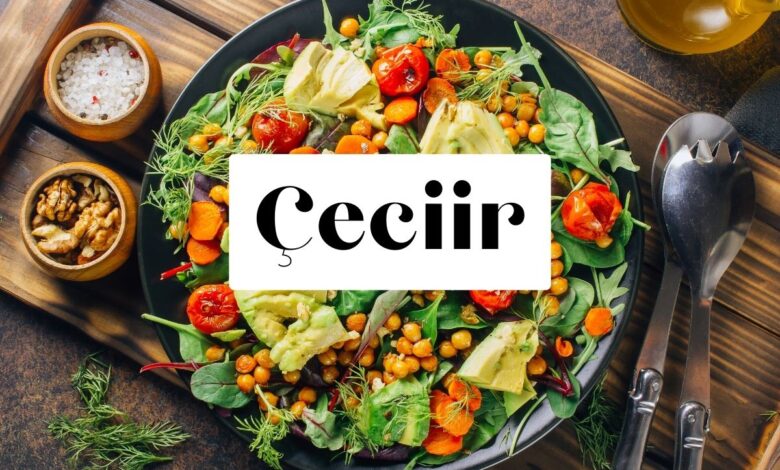
Çeciir, often referred to as “chickpea” in English, is a staple legume widely grown across many regions. With its high nutritional value and versatility in culinary uses, çeciir is gaining increasing importance in agriculture worldwide. This article dives into the benefits of çeciir, its cultivation process, and how it contributes to sustainable farming practices. By examining its economic impact, health advantages, and environmental contributions, we’ll explore why çeciir is considered a future-forward crop for modern farming systems.
The Nutritional Value of Çeciir
Çeciir is a powerhouse of nutrition, containing a wealth of vitamins, minerals, and fiber. A 100-gram serving of çeciir provides approximately 20 grams of protein, making it an essential protein source for vegetarians and vegans. It is also a rich source of dietary fiber, offering about 8 grams per serving. This makes it highly beneficial for digestive health, promoting regular bowel movements and contributing to overall gut health.
Moreover, çeciir is packed with essential vitamins such as B vitamins, including folate, which supports cellular functions and prevents neural tube defects during pregnancy. It also provides significant amounts of iron and magnesium, both of which are vital for maintaining healthy blood circulation and muscle function. This nutritional profile not only makes çeciir a key component of a balanced diet but also a great addition to various dishes, from salads to soups and stews.
The Economic Importance of Çeciir
The economic significance of çeciir extends beyond its nutritional value. In many parts of the world, it is a crucial crop for farmers, contributing significantly to their livelihoods. Çeciir is particularly important in countries like Turkey, India, and Pakistan, where it is a major crop for both domestic consumption and export. The increasing global demand for plant-based protein has further boosted the economic potential of çeciir, driving growth in both local and international markets.
Çeciir is also a valuable crop for rotation in farming systems. Its ability to fix nitrogen in the soil reduces the need for chemical fertilizers, thus lowering production costs and increasing crop yield over time. This makes it an attractive option for farmers seeking to diversify their production while promoting soil health.
The Environmental Impact of Çeciir
Çeciir plays a significant role in sustainable agriculture due to its environmental benefits. As a leguminous crop, it has the unique ability to fix nitrogen in the soil, a process that enriches the soil with essential nutrients and reduces the dependency on synthetic fertilizers. This not only lowers the environmental impact of farming but also improves soil fertility, benefiting subsequent crops.
In addition, çeciir is drought-tolerant, requiring less water than many other crops. This characteristic makes it especially valuable in areas affected by water scarcity. By cultivating çeciir, farmers can ensure a reliable crop yield even in regions with limited rainfall, contributing to food security in arid and semi-arid zones.
Moreover, the cultivation of çeciir supports biodiversity. The crop’s ability to grow in a variety of soil types and conditions allows it to thrive in diverse ecosystems. This, in turn, encourages more sustainable farming practices and greater ecological balance.
The Cultivation Process: Growing Çeciir
Cultivating çeciir requires specific environmental conditions to ensure optimal growth. The crop thrives in well-drained soil with a pH level of 6 to 7. It prefers moderate temperatures, making it ideal for growing in regions with a Mediterranean climate. Çeciir seeds are typically planted in the early spring or late fall, depending on the local climate conditions.
The planting process involves preparing the soil by tilling and ensuring proper moisture levels. Once planted, çeciir requires minimal irrigation, as it is relatively drought-resistant. The crop is generally harvested in late summer or early fall, depending on the region’s growing season. Successful cultivation of çeciir can yield between 1,500 to 2,500 kilograms per hectare, making it a productive crop for farmers.
Challenges in Çeciir Cultivation
Despite its numerous benefits, çeciir cultivation is not without challenges. One major issue that farmers face is the susceptibility of çeciir to pests and diseases, particularly root rot and aphids. Effective pest management strategies, such as crop rotation and the use of organic pesticides, are essential for maintaining healthy yields.
In addition, the market price of çeciir can fluctuate, making it difficult for farmers to predict their income. While demand for çeciir is high, its price can be affected by various factors, including climate conditions, supply chain disruptions, and international trade policies. To mitigate these risks, farmers need to stay informed about market trends and implement effective risk management strategies.
The Role of Çeciir in Plant-Based Diets
With the growing popularity of plant-based diets, çeciir has become a crucial ingredient in vegetarian and vegan cooking. Its high protein content and versatility make it an excellent meat substitute in various dishes. From chickpea-based hummus to curries, stews, and even baked goods, çeciir is a staple in many global cuisines.
Additionally, çeciir flour is used in gluten-free baking, providing an alternative to traditional wheat flour. This makes it an important crop for those with dietary restrictions, including people with celiac disease or gluten sensitivities. As the demand for gluten-free products continues to rise, the value of çeciir in the food industry is expected to grow.
Future Outlook for Çeciir in Agriculture
Looking ahead, the future of çeciir in agriculture appears promising. As the world continues to focus on sustainability and plant-based nutrition, the demand for çeciir is likely to increase. With its numerous health benefits, environmental contributions, and potential for economic growth, çeciir is poised to play an important role in the future of global agriculture.
Innovative farming practices, such as precision agriculture and the use of drought-resistant crop varieties, will further enhance the productivity of çeciir cultivation. Additionally, ongoing research into pest management and disease resistance will help farmers mitigate some of the challenges associated with growing this valuable crop.





I am continuously browsing online for tips that can help me. Thanks!